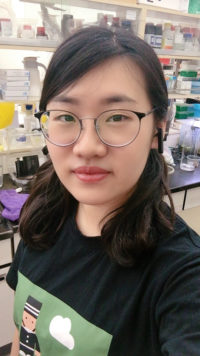PhD student

Since 2021, I have been a member in Dr. Vargo’s lab. Prior to that, I pursued my academic degrees in Entomology, earning both a Bachelor’s and Master’s degree from National Chung-Hsing University in Taiwan. During my Bachelor’s studies, I focused on investigating the impact of urbanization on arthropod biodiversity. In my Master’s research, I delved into the population genetic structure and invasion pathways of the big-headed ant in Taiwan.
Presently, my research centers around the field of invasion biology, specifically studying the white-footed ant species Technomyrmex difficilis, which was recently introduced to Texas and initially identified in 2021. To unravel the colony structure of the white-footed ant between Florida (its original discovery location in the US) and Texas (its recent US discovery), I employ genetic, behavioral, and chemical indicators. These investigative tools help shed light on the dynamics of this ant species.
Additionally, I have conducted research on the odorous house ant, Tapinoma sessile, which is an urban pest prevalent throughout the continental USA. This study has revealed diverse social structures within urban and natural environments. By exploring the potential differences in chemical profiles, thermal tolerance, microbiomes, and morphological characteristics between ant colonies in urban and natural habitats, I aim to gain insight into the invasive traits exhibited by T. sessile. This species provides a unique opportunity to investigate invasive characteristics within a native species since urban colonies exhibit certain similarities to invasive ants.
Education (CV)
MSc in Entomology, National Chung Hsing University, Taichung, Taiwan, 2020
Advisor: Kok-Boon Neoh
BS in Entomology, National Chung Hsing University, Taichung, Taiwan, 2018
Contact Information
Email: kellyliu84t@tamu.edu
Publications
Eyer, P.-A., Moran, M.N., Richardson, Steven, Shults, P. T., Liu, K.-L.K., Blumenfeld, A.J., Davis, R., Vargo. E.L. (2023) Comparative genetic study of the colony structure and colony spatial distribution between the higher termite Amitermes parvulus and the lower, subterranean termite Reticulitermes flavipes in an urban environment. Insectes Sociaux https://doi.org/10.1007/s00040-023-00919-2
Liu, K.-L., Tseng, S.-P., Tatsuta, H., Tsuji, K., Tay, J.-W., Singham, G. V., Yang, C.-C., & Neoh, K.-B. (2022). Population genetic structure of the globally introduced big-headed ant in Taiwan. Ecology and Evolution, 12, e9660. https://doi.org/10.1002/ece3.9660
Chong, H.-K., Peng, M.-H., Liu, K.-L., Singham, G. V., & Neoh, K.-B. (2022). Role of social aggregation in the fitness cost of pyrethroid‐resistant German cockroaches. Journal of Applied Entomology, 146(10), 1320-1332. https://doi.org/10.1111/jen.13070
Peng, M.-H., Hung, Y.-C., Liu, K.-L., & Neoh, K.-B. (2020). Landscape configuration and habitat complexity shape arthropod assemblage in urban parks. Scientific Reports, 10(1), 16043. https://doi.org/10.1038/s41598-020-73121-0
Liu, K.-L., Peng, M.-H., Hung, Y.-C., & Neoh, K.-B. (2019). Effects of park size, peri-urban forest spillover, and environmental filtering on diversity, structure, and morphology of ant assemblages in urban park. Urban Ecosystems, 22, 643-656. https://doi.org/10.1007/s11252-019-00851-z